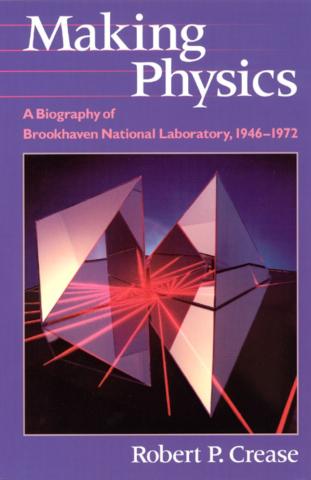Making Physics: A Biography of Brookhaven National Laboratory, 1946-1972

Brookhaven National Laboratory was the first major national laboratory built for basic civilian research. From Nobel Prize-winning work in atomic physics to addressing community concerns over radiation leaks, the history of Brookhaven parallels the changing fortunes of “big science” in the United States. Robert P. Crease brings to life the people, the instruments, the science, and the politics of Brookhaven’s first quarter-century.
Parity violation threw a sudden and dramatic spotlight on the weak interaction—or rather, whether such a thing as the weak interaction existed. At the Rochester conference in April 1957, Wu described a still unpublished experiment, by her students Brice Rustad and Stanley Ruby, at the BGRR suggesting that beta decay, the prototypical weak interaction, might have different forms and therfore could actually be the product of several forces. One piece of evidence for this had to do with the spin of the neutrinos emitted in beta decay. Mor exactly, it had to do with wat is called the helicity of the neutrinos, or their spin relative to the direction of motion....The experiment described by Wu suggested bea-decay neutrinos could be right-janded, which implied in turn that beta decay itself had different forms and was not one force.
,When Leonard Schiff, Chariman of the physics department at Stanford began organizing the program for an APS meeting to be held just before Christmas 1957, he cast about for someone to survey the beta-decay problem. Maurice Goldhaber's name leapt to mind....Goldhaber recalled:
My first inclination was to say no, because I had not worked on beta spectra. My second inclination was that it would do me a lot of good to read these contradictory papers. I accepted, got the key reprints together, and stayed home one Friday morning in mid-October to read them. Before I finished the first paper, I thought, "There must be a better way to do this." Twenty minutes later, I had thought of one.